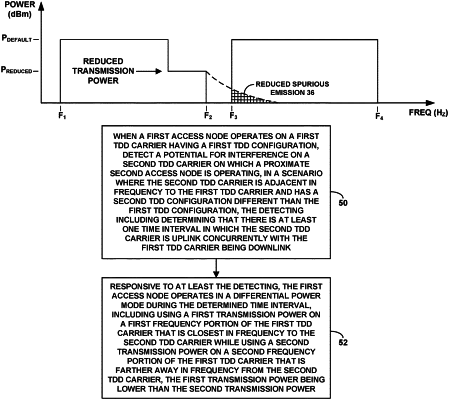| CPC H04W 72/541 (2023.01) [H04L 5/0082 (2013.01); H04L 5/1469 (2013.01); H04W 72/0473 (2013.01)] | 20 Claims |

|
14. An access node comprising:
a wireless communication interface through which the access node engages in air-interface communication operating on a first time division duplex (TDD) carrier having a first frequency range and having a first TDD configuration that defines a first sequence of uplink and downlink time intervals;
a backhaul communication interface; and
a controller configured to control transmission by a access node on the first TDD carrier,
wherein the controller is configured to detect a potential for interference on a second TDD carrier, wherein the second TDD carrier is adjacent in frequency to the first TDD carrier and has a second TDD configuration different than the first TDD configuration, wherein the detecting includes determining that there is at least one time interval in which the second TDD carrier is uplink concurrently with the first TDD carrier being downlink, and
wherein the controller is configured to respond to at least the detecting by causing the access node to operate in a differential power mode during the determined time interval, wherein, in the differential power mode, the access node uses a first transmission power on a first frequency portion of the first TDD carrier that is closest in frequency to the second TDD carrier while using a second transmission power on a second frequency portion of the first TDD carrier that is farther away in frequency from the second TDD carrier, the first transmission power being lower than the second transmission power.
|